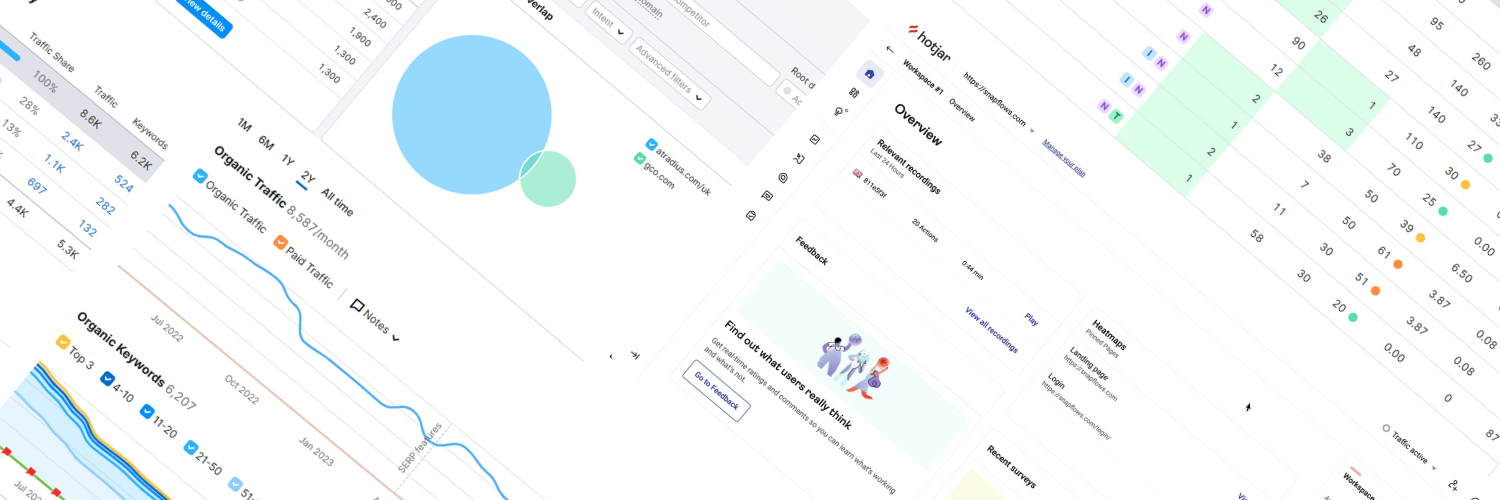DEBT COLLECTION LEADER
real-world solutions from concept to execution: a showcase of strategy and impact
Short Summary
My recent collaboration with a leading international trade credit insurance and debt collection company showcases the culmination of my copywriting journey. Here, the depth of my experience meets the breadth of global business, resulting in measurable outcomes.
- Collaboratively worked with performance managers to co-create and execute content strategies, leading to over 20 key keywords ranking on the first page of Google results.
- Enhanced the design and user experience of crucial subpages and landing pages, integrating UX writing principles and user behavior analysis via tools like Hotjar, resulting in a conversion increase of 8% to 14%.
- Spearheaded a 20% year-over-year increase in website traffic from Google, reflecting the success of our targeted SEO practices.
- Suggested SEO enhancements for the Singapore and Indonesia branches, and implemented some of them, contributing to a 35% rise in search engine rankings.
- Played a key role in producing educational content that became central to a campaign, leading to a 20% boost in lead generation in specific markets.
Want to know how these articles and pieces of content came to life? Keep on reading the case study and get to know the process:

Origins
Founded in the 1920s, the company has a long-standing reputation based on traditional, in-person services. With the rise of digital importance, it has been evolving to strengthen its online presence. My collaboration was a part of this shift, enhancing digital engagement and modernizing their approach to meet new market demands
Project Objectives
- The company's online growth trajectory had plateaued, manifesting in static search engine rankings and underwhelming user engagement on their digital platforms.
- Detailed analytics revealed that the content, while abundant, lacked the targeted SEO optimization necessary for visibility.
- Additionally, the website's user interface and experience did not align with modern UX principles, resulting in a higher bounce rate and lower conversion metrics.
- This stagnation affected the brand's online authority and limited its potential for market expansion and customer retention in a competitive industry.
Proposed Solutions
To counteract these challenges, a dual-focus approach was adopted. The solution comprised a strategic revamp of the existing content and a thorough user experience enhancement. The content strategy was twofold: first, to elevate the brand's voice and authority through precisely targeted, SEO-rich editorial content that captured the nuanced interests and search behaviors of their diverse audience; second, to elevate the user experience, allowing a seamless and intuitive interaction with the website.
For SEO, this meant a granular analysis of keyword performance, competition, and search intent, followed by the crafting and restructuring of web content. On the UX front, it involved overhauling the design elements of key web pages, simplifying navigation, and implementing intuitive design cues to guide the user naturally toward engagement and conversion goals.
This strategy was designed not merely to solve existing problems but as a sustainable, adaptive framework for ongoing content production and UX optimization.

Process and Execution
1. Initial audit and strategy planning:
- Conducted numerous audits of the current content and SEO status throughout our collaboration. Click here [EXAMPLE] to see an example.
- Collaborated with performance managers to outline key performance indicators (KPIs) and strategic goals.
2. Keyword research and SEO integration:
- Performed in-depth keyword research to align with the business’s market focus.
- Seamlessly incorporated SEO findings into content planning to ensure organic growth.
3. User journey optimization:
- Analyzed existing user behavior patterns using analytics tools.
- Redesigned key landing pages, prioritizing intuitive navigation and user experience (UX).
4. Content development and scheduling:
- Crafted an editorial calendar to systematize content publication across platforms.
- Implemented content batching for efficiency and consistency in messaging.
5. Performance tracking and agile adjustments:
- Established a routine of reviewing content performance against the set KPIs.
- Applied an agile methodology to refine strategies and content in response to real-time data.
- Examples of my real-time reports and suggestions: EXAMPLE_1, EXAMPLE_2.
6. Collaboration and workflow optimization:
- Utilized collaborative tools for cross-team communication to maintain a synchronized workflow.
- Held regular touch-points with the content and SEO teams to ensure strategy alignment.
Results
- Over 20 new key phrases achieving first-page Google rankings.
- A 35% increase in search rankings for Singapore and Indonesia branches.
- An overall 20% year-over-year uplift in traffic on key websites and landing pages.
- The strategic enhancements in SEO and content not only fortified the brand's authority but also paved the way for future innovations. These efforts have unlocked opportunities for launching a SaaS platform and fostering partnerships with leading financial software entities to develop integrated solutions.
Challenges and solutions
1. Bridging Content Expertise with Industry Knowledge:
- Problem: Initially, there was a knowledge gap regarding the intricacies of the debt collection industry.
- Solution: Established regular knowledge-sharing sessions with the in-house experts to gain industry insights, ensuring content accuracy and relevance.
2. Aligning SEO with Compliance Regulations:
- Problem: Navigating the debt collection sector's strict compliance and regulatory framework posed a challenge for SEO optimization without compromising legal standards.
- Solution: Worked closely with legal advisors to understand the boundaries and developed an SEO strategy that was both effective and compliant, focusing on educational content that still hit target keywords.
3. Improving Global Content Consistency:
- Problem: Discrepancies in content messaging across different branches affected brand cohesion.
- Solution: I initiated the development of a unified content guideline and trained local content teams, ensuring a consistent brand voice while allowing for regional adaptations.

Reflections
As I look back on this project, some things stand out:
1. There’s power in staying curious. Asking 'why' and 'what if' opened up new strategies that really paid off.
2. In the content game, aligning SEO with user intent isn't just ticking boxes.
3. Flexibility means not only adapting to change but also anticipating it.